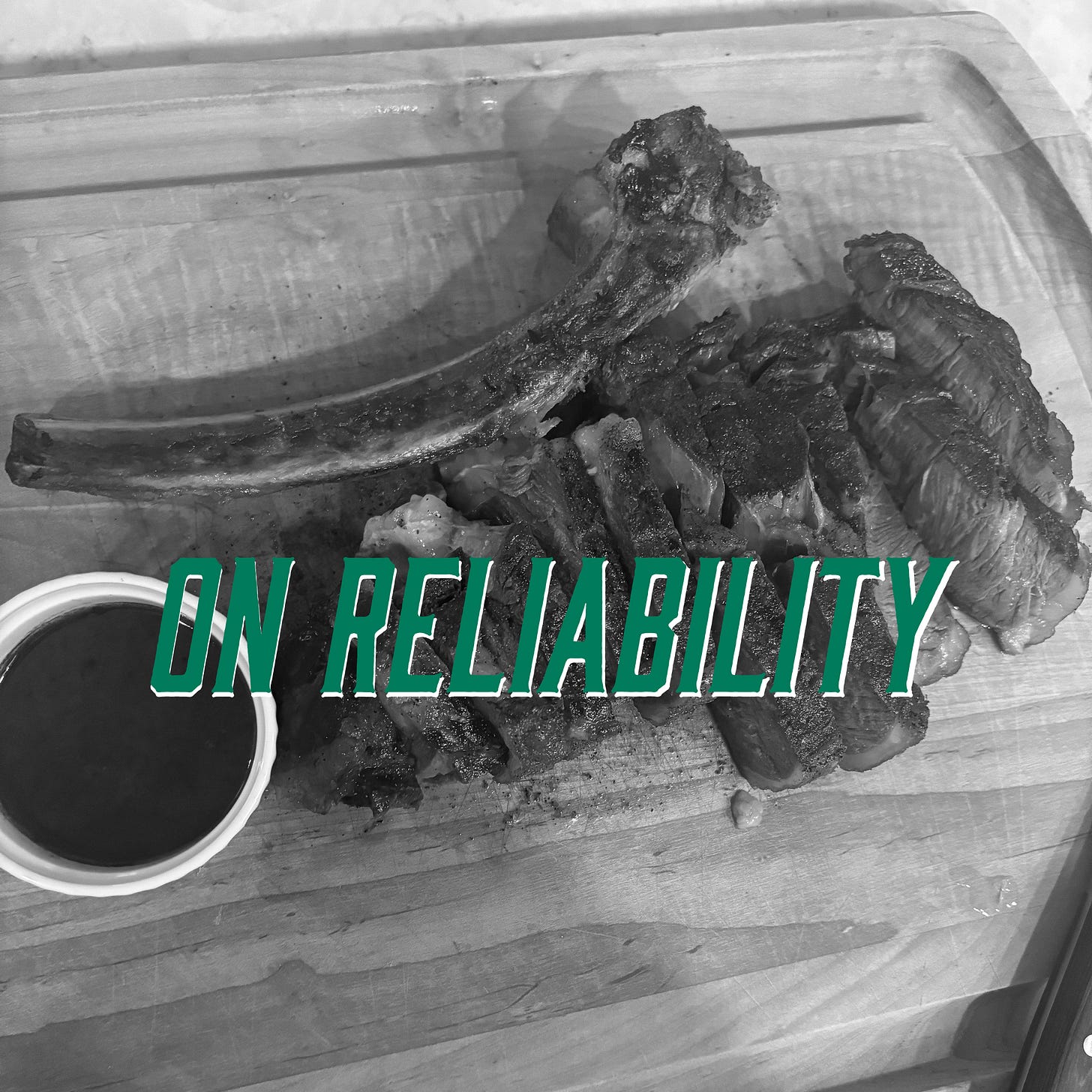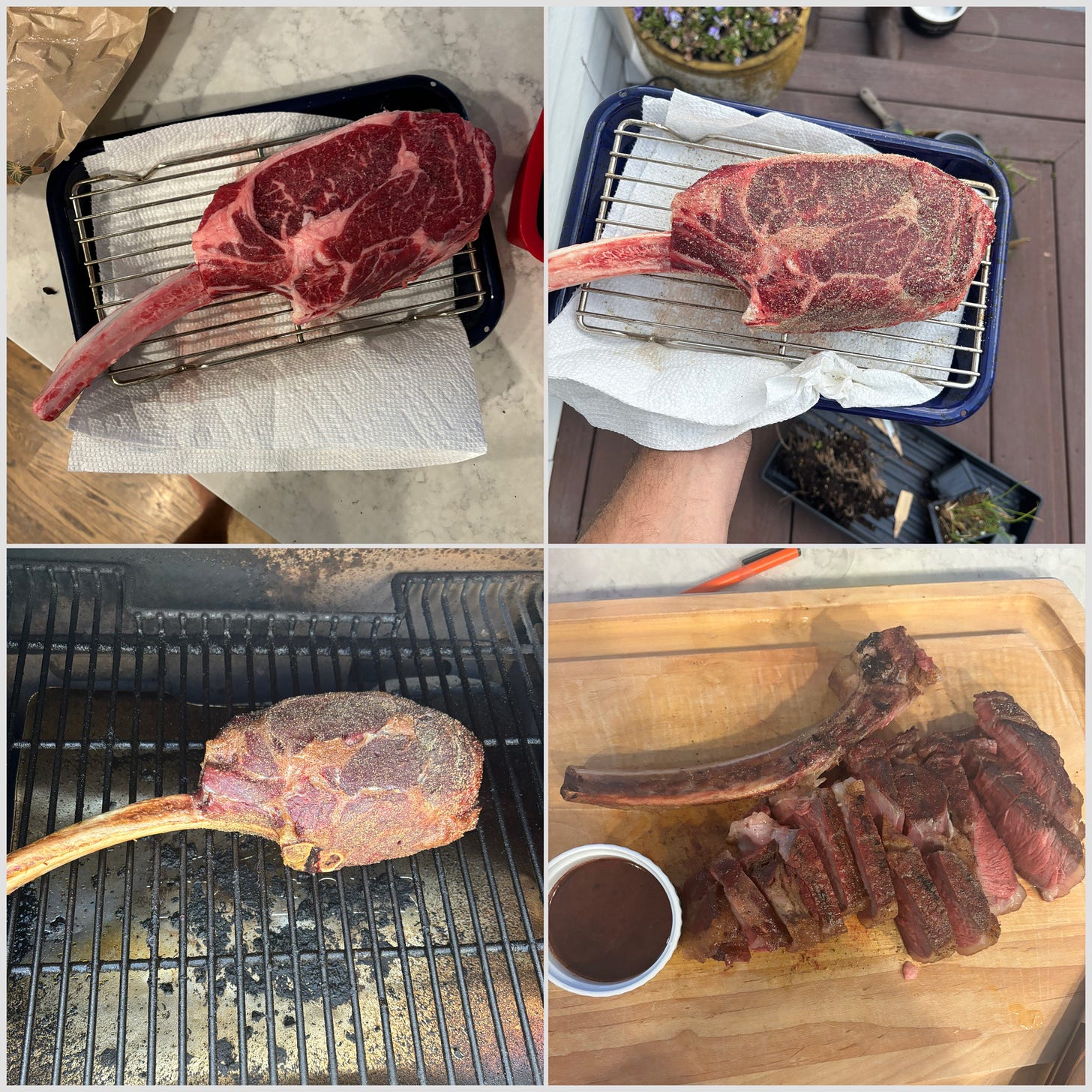If practicality were no matter, I would drive a 1980s Toyota Land Cruiser FJ62. Though I imagine the logistics of car seats, fuel economy, and acceleration on the highway might prove inconvenient on a vehicle older than myself, there’s something to be said about the rugged simplicity of a Land Cruiser1. Land Cruisers, and Toyotas in general, are known for their reliability2 and extended lifespans. It’s not unheard of to see well-maintained models pushing 300,000 miles. And besides, when the Family CWD makes our annual shore visits to Gma and Papa’s in New Jersey, there’s one parked outside a neighbor’s house — along side beach wagons, kids’ bikes, sand toys, and other such paraphernalia. So clearly, even with kids, it’s possible to have your vintage 4x4 and drive it, too.
As long as we’re thinking wishfully, I’ll throw out some other old things I’d like to own: a 1970s Boston Whaler 13 Sport, a couple more vintage Barbours, a salt farm in coastal Maine which has fallen into disuse, my old Rawlings “Heart of the Hide” 11-inch infielder’s glove3, a renovated townhouse on Pickney Street in Beacon Hill4, some very old copies of Audabon’s Birds of America, and a nice leather sofa with a well-worn indent for a good old dog.
I suppose, thinking about it, as I get older, too, I’m more and more drawn to such things. I’ve written before about patina, about how things seem to get better the more they get broken in. There’s something to be said about that. It’s easy to always be chasing after the newest, the best — thinking that by upgrading what you’ve got, you can upgrade yourself at the same time (and I’m as guilty of it as anyone). Maybe, instead, I’d be better served to stick with the things that I already have, embrace their wears, their tears, their seasoning, seeing if I can’t just make them last a little longer. That way, in a few decades, I can simply be more content with what I have instead of lusting over something I could have only bought new before I was born5.
To do this, though, you need to make sure that they are reliable. Once these things fall out of maintenance, they start losing their allure — not to mention any remaining practicality. A vintage truck is cool — until you find yourself stuck on the side of a trail, out of cell service6. It takes a little more patience and hard work, elbow grease and shop rags, to keep things in good working order. It’s not quite as easy as just replacing something new every time it breaks — you need a little more dedication, a little more faith. You need to invest — time, effort, energy, probably even some money, too — in these classics if you really want to get anything out of them.
I write all this wistfully after celebrating another turn around the sun — my birthday occurring earlier this week — so forgive me if I come off as too pensive. That’s just what happens when you give yourself too much time to think. So as I find myself becoming a little more well-worn, with some patina showing up around the edges, I write this to remind myself to stay reliable, to stay active, and to stay moving7. To not skip the service visits, to keep the engine well-lubricated, and even more so, to get done what needs to get done before it needs to get done8.
To celebrate those who’ve helped keep me in service this long, we’re making a reliable favorite: a reverse-seared, Tomahawk ribeye. As long as you have an oven, this is about as simple as it gets — and is even better if you have a smoker.
Let’s give it a shot.
The night before you want to cook, liberally salt a big honking cut of bone-in ribeye with salt. Let it sit in the fridge overnight9. Take the meat out of the fridge an hour before you’re ready to start cooking, then pre-heat your oven or smoker to 205(F). Give the steak a pat down with your favorite rub (we used Meat Church Blanco), then toss it onto the heat until the internal temp hits +/- 130(F)10.
When the meat comes to temperature, remove it, then heat up a cast-iron pan to ripping hot. Add some cooking fat — we used bison tallow11 this time, but ghee or even butter will work as well — then sear the steak til it develops a crust on both sides. You can then make a pan sauce with more cooking fat, vinegar, and red wine added to the pan drippings.
There you have it, a reverse-seared ribeye. You can up the ante — and embrace the theme of the week — by getting a dry-aged cut of meat, but not 100% necessary if you do a dry-brine before hand. Just a flavor multiplier, really.
From me, you won’t find too much more today. Mrs. CWD and I are heading tomorrow up to a wedding in Maine — our first of the season — and I’m hoping I may stumble upon my derelict salt farm on the drive up. A preemptive thank you to Auntie and Tio CWD for watching the Kiddos12.
Whether you spend your weekend sharing a camp bunk with 11 other adults sleeping on twin beds or by yourself, alone with a good book and a better dog, I hope you spend it happily. We’ll be back here next week with more unsolicited advice and poorly written recipes.
I do now drive a 4Runner, which one might say is the spiritual successor of the Land Cruiser, at least in America, but it’s not quite the same.
Unlike their Land Rover counterparts, which have a reputation of leaking oil (or worse) if you look at them funny.
Not that that makes them any less endearing nor makes me one want any less.
Which, as best as I can guess, is somewhere on the Tufts’ campus where I must have left it after playing catch with Reader CWD, MPP.
In front of which I’d probably need to park a Land Rover Series II with a cotton tow rope wrapped around the front winch.
There’s an idea called the “Lindy Effect” which premises that the longer something has been around, the longer it will stay around. Whether it’s true or not, it’s a good way to convince yourself it’s a good decision to buy something with history.
I can tell you that’s one thing that, if she ever lets me get one of those rigs, would make Mrs. CWD really regret it!
It’s for this reason I like to do, at least annually, a physical challenge like Murph on my birthday, long hikes with the Brothers and Grandfather CWD, endurance events with Mrs. CWD, or any sort of misogi.
Yes, Cheffy, I’m aware that that is somewhat of a tautology, maybe a platitude at best.
You could also do this the day of, but I’d give it at least an hour or two in the fridge for the dry brine.
This took about 2 hours for this cook.
Unfortunately not tallow from NBB, because when we got our bison last year, it was from a winter harvest and the fat content was too low for any real tallow extraction. Maybe next time!
And a post-emptive thank you to Cheffy for helping me wrangle the Kiddos while Mrs. CWD was out of town.








When I was in first grade, I got the chicken pox and Grandpop bought me Audabon’s Birds of America and a book called The Swift Deer to keep me distracted from itching! I wish I still had them!
As an owner of an 80 series LandCruiser, I feel this. I’ve fixed it on the side of the road. I’ve hemorrhaged money at times. I’ve sacrificed a lot of time. My favorite part of a process like this - you’re not just making the vehicle reliable, you’re making yourself reliable. Learning how to fix all these things yourself… you can help others. You can do it on a future vehicle. You get that courage to take on something else.